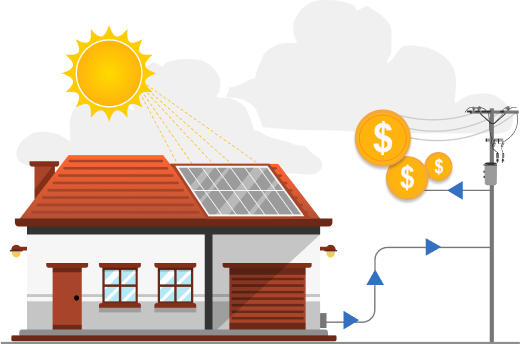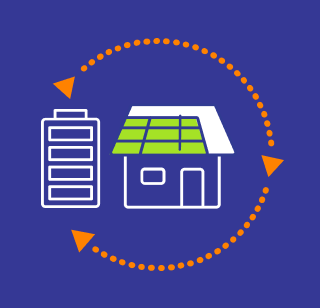

Take an active role in your energy resilience
Extreme weather is pushing California’s power grid to the limit and that’s no secret. But demand response is saving communities from widespread outages* — a lesser-known fact gaining traction with each grid crisis.
Simply put, demand response is short-term, voluntary energy conservation. It’s a tactic for reducing electricity consumption to alleviate stress on the grid during times when operators worry energy shortages may lead to unplanned outages.
Encouraging everyone to conserve power is crucial during heat waves and periods of limited supply, often between 4 p.m. and 9 p.m., when more people are home and solar energy production tapers off at sunset.
To balance the supply and demand, grid operators may encourage ratepayers to modify their behaviors through financial incentives and reliability (flex) alerts.
When tens of thousands of households shift their energy use at once, the impact can be monumental. It can even save the grid from collapsing.
Collective Energy Savings Can Prevent Grid Failure
Starting Labor Day weekend, California faced the hottest and longest heat wave on record, with some Bay Area cities exceeding 110-degree temperatures. The state’s grid operator issued a warning to prepare for rolling blackouts, and electricity demand hit an all-time high of 52,000 megawatts.*
But the rolling outages never came
By collectively conserving power — whether it was turning off high-energy appliances or participating in programs that automate energy savings — residents joined forces to escape rolling blackouts.

When automated alerts were issued to residents on September 6, almost 2GW of peak power usage was removed from the grid, or about 3% of demand!
Why did it work?
Across California, residents are seeing first-hand the effects of climate change, from prolonged drought to catastrophic wildfires. As extreme weather prevails, more consumers realize how fragile our power grid is, and how quickly it can fail.
Residents proved that waiting to wash clothes, turning thermostats up, and offering the energy stored in their solar batteries was a small price to pay to prevent a grid failure.
Get Rewarded Through Demand Response Programs

Thankfully, grid emergencies aren’t the norm (yet). But our infrastructure is aging, and our summers are growing hotter. A higher demand for electricity requires a greater supply. The options are to modify how we consume electricity during peak hours or build more power plants that can rev up as needed to meet the demand solar plus storage cannot.
It’s an easy answer and Sunnova’s PowerGrid Protect™ program can automate your participation and earn you rewards.
How Sunnova’s PowerGrid Protect™ Program Works
-
When the power grid experiences high demand and is stressed...
-
Sunnova will respond to grid conditions and instruct your battery to supply power to your home...
-
Your home is powered by your battery...
-
Your resilience keeps the grid stable!
Any Sunnova customer who has solar plus battery storage, or an add-on battery and lives in a participating area can sign up and help prevent power outages and rolling blackouts. Our PowerGrid Protect™ program allows you to maximize the benefit from your solar system by powering your home with energy stored in your battery during times of peak electricity demand.
Here's how it works:
- Your home will first use the energy generated by your California solar panels
- If you need more power, your home will draw the solar energy stored in your battery
- After your battery is depleted, if your panels aren’t generating enough electricity, then your home will pull electricity from the grid
You won’t even notice a difference, while helping to boost your community’s resilience. All you have to do is enroll and share the data from your utility meter with Sunnova. From there, we’ll signal your battery to power your home any time your local grid is stressed during peak demand.
And if you’re concerned about public safety power shutoffs (PSPS) or severe weather events, rest assured that your battery will maintain a reserve capacity of 20% — and you’ll help stabilize the grid without changing your lifestyle.







